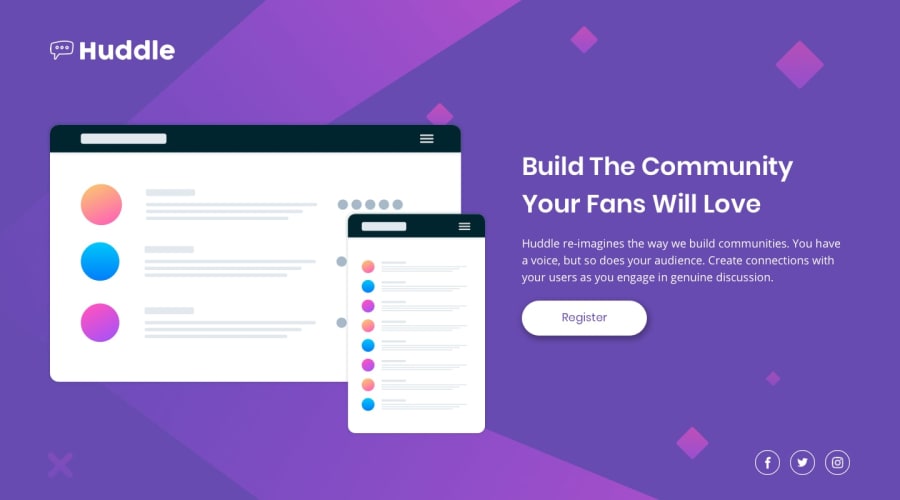
Design comparison
Community feedback
- @VCaramesPosted about 2 years ago
Hey @brian-jensen, great job on this project!
Some suggestions to improve you code:
- For accessibility purposes, it’s best to use rem/em instead of px for your CSS property values.
For media queries, I definitely suggest using em for them. By using px your assuming that every users browser (mobile, tablet, laptop/desktop) is using a font size of 16px (this is the default size on browser). Em's will help with users whose default isn't 16px, which can sometimes cause the your content to overflow and negatively affect your layout.
- When using buttons/links alongside the “hover” effect, you’ll run into the problem where the hover effect gets “stuck”. To prevent this, you’ll want to add the @media (hover: hover) to your CSS code and include within the query all the classes that are using the hover effect. Since not all devices support hover effects this query will then check to see if it is or not.
Happy Coding!
Marked as helpful0@brian-jensenPosted about 2 years ago@vcarames Great advice about using em for media queries and @media (hover: hover)! ⭐
However, this advice does have a vital caveat "it’s best to use rem/em instead of px for your CSS property values": Except for padding and container (not text) margins. As you mentioned; "in the case of users whose default isn't 16px", using em/rem for padding and container margins could cause exponentially huge values for those, condensing the viewable area.
0@VCaramesPosted about 2 years ago@brian-jensen
If your values are less than 8px, you should be fine, since the value is so small. Anything larger than that, I would definitely use rem/em.
0
Please log in to post a comment
Log in with GitHubJoin our Discord community
Join thousands of Frontend Mentor community members taking the challenges, sharing resources, helping each other, and chatting about all things front-end!
Join our Discord
